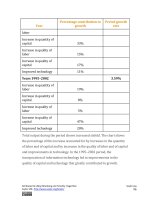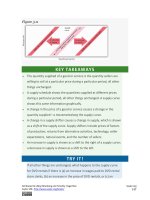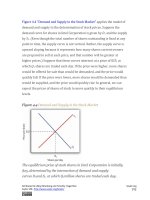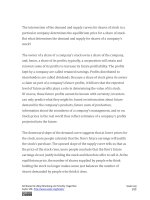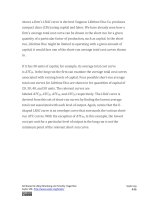Authors libby rittenberg 715
Bạn đang xem bản rút gọn của tài liệu. Xem và tải ngay bản đầy đủ của tài liệu tại đây (383.98 KB, 1 trang )
Since using nonrenewable resources would seem to mean exhausting a
fixed supply, then one would expect the prices of exhaustible natural
resources to rise over time as the resources become more and more
scarce. Over time, however, the prices of most exhaustible natural
resources have fluctuated considerably relative to the prices of all other
goods and services. Figure 13.9 "Natural Resource Prices, 1980–
2007"shows the prices of four major exhaustible natural resources from
1980 to 2007. Prices have been adjusted for inflation to reflect the prices
of these resources relative to other prices.
During the final two decades of the twentieth century, exhaustible natural
resource prices were generally falling or stable. With the start of the
current century, their prices have been rising. In short, why do prices of
natural resources fluctuate as they do? Should the process of continuing to
“exhaust” them just drive their prices up over time?
Figure 13.9 Natural Resource Prices, 1980–2007
The chart shows changes in the prices of five exhaustible resources—
chromium, copper, nickel, tin, and tungsten (relative to the prices of
other goods and services)—from 1890–2003.
Attributed to Libby Rittenberg and Timothy Tregarthen
Saylor URL: />
Saylor.org
715
